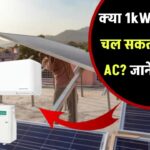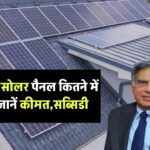
soaring electricity bills. That’s why many homeowners and businesses are turning to a smart solution – solar panels. In this article, we’ll dive deep into how solar energy can help you beat the heat and save big on your electricity costs, especially during the summer.
Whether you’re new to solar energy or considering making the switch, this guide is designed to be simple, clear, and packed with expert advice, actionable tips, and real-world examples.
Also Check: Tesla Powerwall 3 Launches in Sydney – Is This the Ultimate Game-Changer for Your Energy Bills?
Why Solar Panels Are a Smart Choice for Summer
The summer sun isn’t just about heatwaves and ice creams; it’s also about optimal solar power production. Solar panels thrive on sunlight. During the longer daylight hours of summer, panels absorb more energy, allowing homeowners to produce significantly more electricity.
Fact: Solar panels generate 20-30% more electricity during summer compared to other seasons.
How Does It Work?
When sunlight hits the panels, it’s converted into electricity through photovoltaic (PV) cells. This energy can directly power your home, reducing the amount you draw from the grid. Any excess electricity can either be stored in batteries for later use or fed back into the grid (thanks to net metering policies).
Step-by-Step Guide
Step 1: Assess Your Energy Needs
Before investing, understand your current electricity usage. Look at your summer bills over the past few years to estimate your energy needs. Most homes consume 30-50% more electricity in summer due to air conditioning.
Step 2: Check Solar Viability
Solar panels work best in sunny areas, but they can still be effective even in less sunny regions. Use tools like Google’s Project Sunroof to check your home’s solar potential.
Step 3: Get Professional Consultations
Contact certified solar providers to assess your roof’s condition, angle, and shading. A reputable installer will provide a detailed proposal, including energy savings estimates, system design, and costs.
Step 4: Explore Incentives and Financing
Take advantage of government incentives. In India, for example, the PM Surya Ghar Yojana offers subsidies for residential solar installations. Similarly, the U.S. offers a 30% Federal Solar Tax Credit.
Step 5: Install and Monitor
Once installed, most systems come with monitoring apps that show you real-time energy production and savings.
Also Check: Solar System Secrets: Install Your Fronius Inverter Like a Pro and Maximize Output!
Real-World Example
Meet Priya Sharma from Delhi. Last year, Priya installed a 5kW solar system on her rooftop. Before solar, her summer electricity bill was around INR 10,000 per month. After switching, her bill dropped to less than INR 2,000! Plus, she sells excess power back to the grid, earning additional credits.
Advantages Beyond Cost Savings
- Reduced Carbon Footprint: Solar energy is clean and renewable.
- Energy Independence: Protects you from rising grid electricity prices.
- Home Value Increase: Homes with solar panels sell for up to 4% more.
Common Challenges and How to Overcome Them
- High Initial Cost: Financing options and government subsidies can significantly lower upfront expenses.
- Maintenance: Solar panels require minimal maintenance – just occasional cleaning and annual inspections.
- Weather Dependency: While production drops on cloudy days, modern systems and battery storage mitigate this issue.
(FAQs)
1. Do solar panels work during power outages?
Only if you have a battery backup system. Otherwise, for safety reasons, your solar system shuts down when the grid is down.
2. How long do solar panels last?
Typically, panels come with a 25-year performance warranty but often continue producing electricity beyond 30 years.
3. How much can I save with solar panels?
Depending on your location, system size, and usage, you can save between 50% to 90% on your electricity bills.
Also Check: Do Solar Panels Need Maintenance? You’ll Be Surprised What Most Owners Don’t Know!







